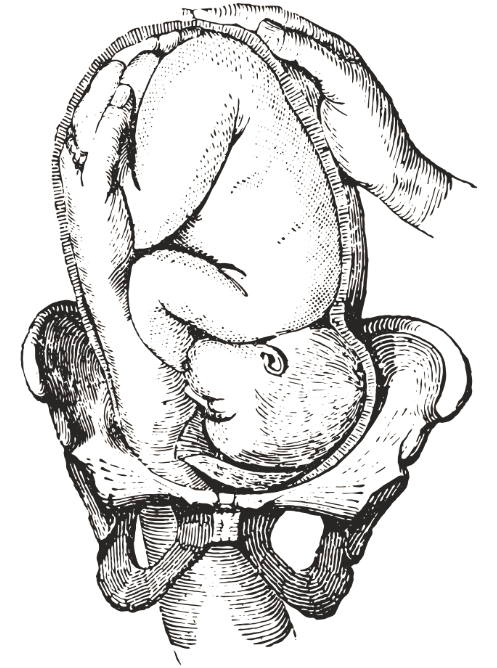Breech Presentation and External Cephalic Version (ECV)

Breech Presentation
At term, approximately 3-5% of all pregnancies will have a fetus in breech presentation (head-up position). Although vaginal breech deliveries used to be routine, currently the recommended mode of delivery for babies in breech presentation is cesarean section due to the small risk of birth injury during a breech delivery (with the exception being a second twin, for whom a breech delivery has been shown to be as low risk as a cesarean delivery).
In order to increase the chances for a vaginal delivery, external cephalic version (ECV) is an elective procedure that should be offered to women with breech presentation at term.

What is an ECV?
ECV is a procedure in which the obstetrician manually rotates the baby from breech to cephalic (head-down) by placing pressure on the maternal abdomen. In our practice, we perform them in the hospital and usually with regional (epidural or spinal) anesthesia. The procedure usually takes less than 5 minutes.
The likelihood of success ranges from approximately 40-80% and is dependent on several variables, including maternal parity (when more babies delivered in the past is associated with a higher success rate), fetal size, amniotic fluid volume, and the use of regional anesthesia (which improves the success rate). After the procedure is complete, the patient is observed for several hours with fetal monitoring to allow the regional anesthetic to wear off, ensure that she and the fetus are doing well, and to observe for signs of labor.
What are the risks of ECV?
There is a small (<1%) risk of requiring an emergency cesarean delivery, which is one of the reasons we perform them in the hospital on the Labor and Delivery unit. Approximately 10% of women will go into labor from the procedure, which would require a cesarean delivery that day if the procedure were unsuccessful. If the procedure was successful, labor would usually lead to a vaginal delivery later that day or the next day.
Timing of ECV
The procedure is ideally performed at 36-38 weeks to allow as much time as possible for the fetus to turn on its own and avoid the risk of a preterm delivery due to labor or a complication from an ECV. However, it is not performed late enough in pregnancy that the procedure becomes technically difficult due to a larger fetus, or one than is deeper engaged in the maternal pelvis.
If your baby is in breech presentation and you are approaching 36 weeks, be sure to speak with your doctor regarding whether you are a candidate for ECV.
Maternal Fetal Medicine blogs are intended for educational purposes only and do not replace certified professional care. Medical conditions vary and change frequently. Please ask your doctor any questions you may have regarding your condition to receive a proper diagnosis or risk analysis. Thank you!







